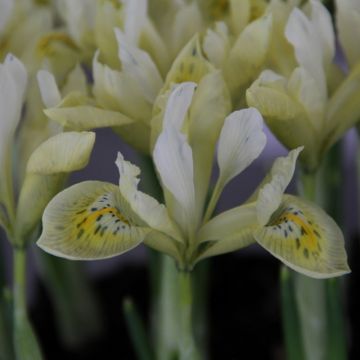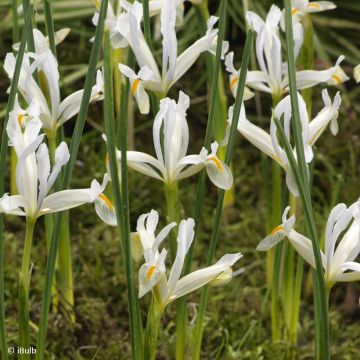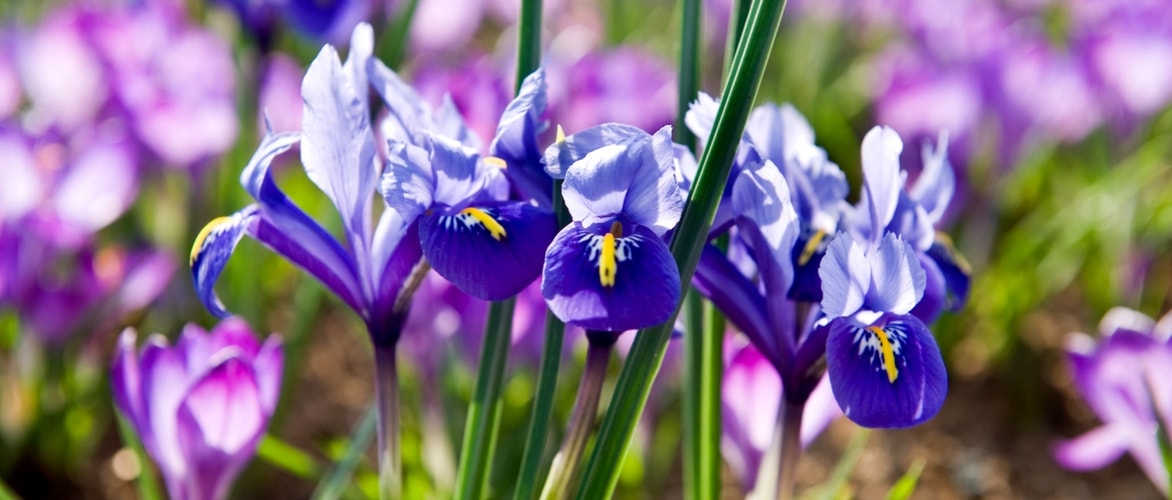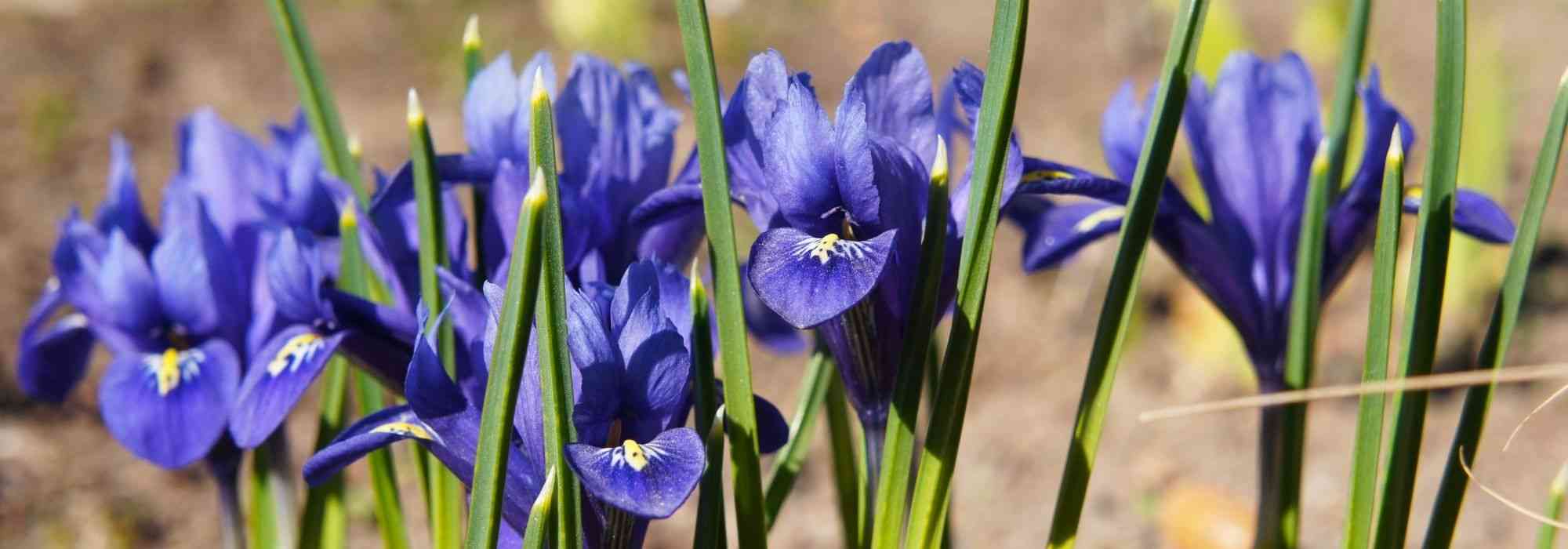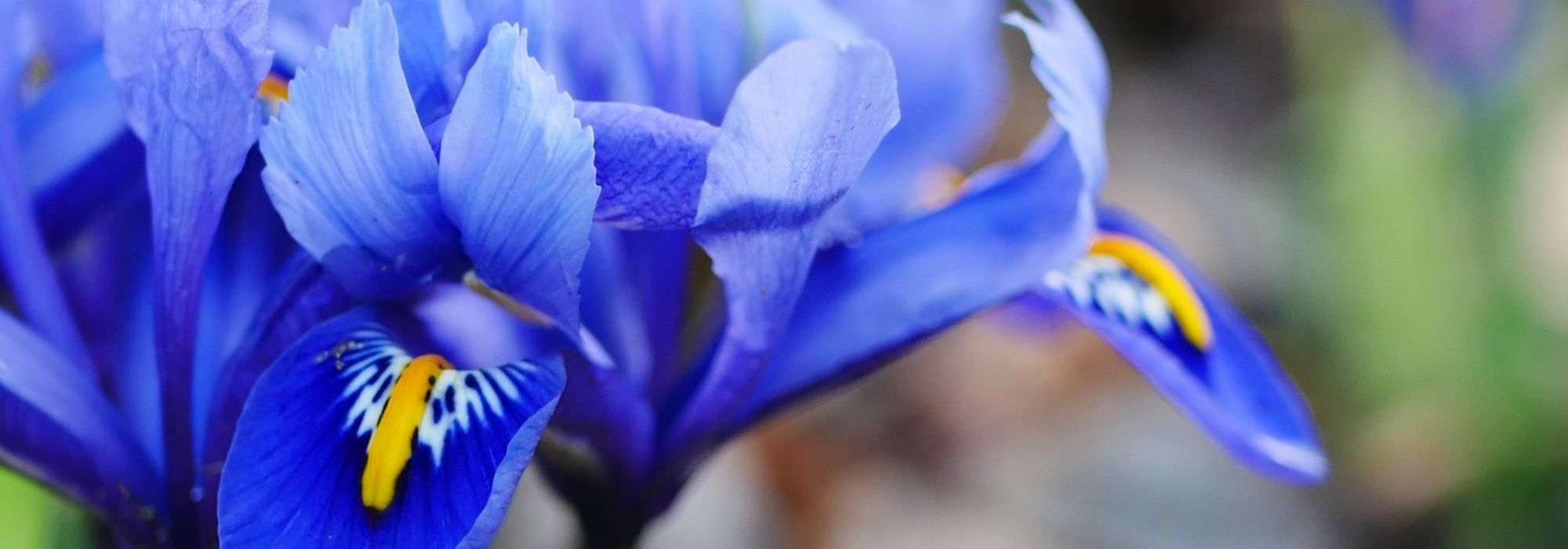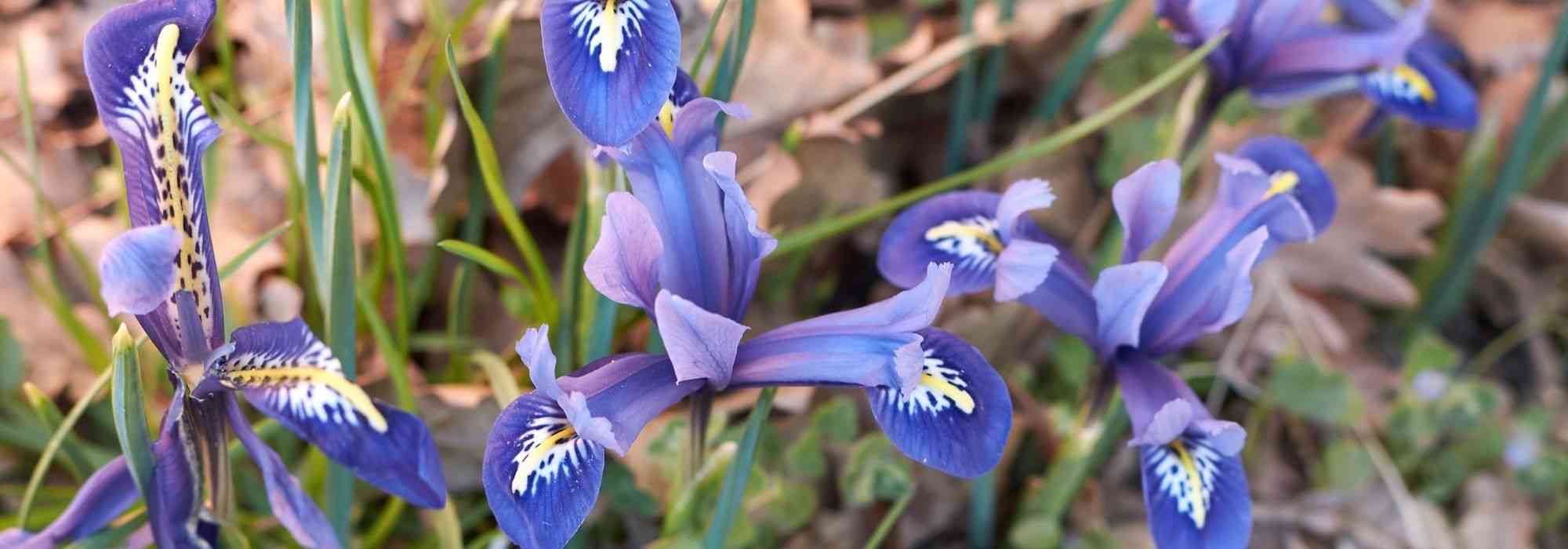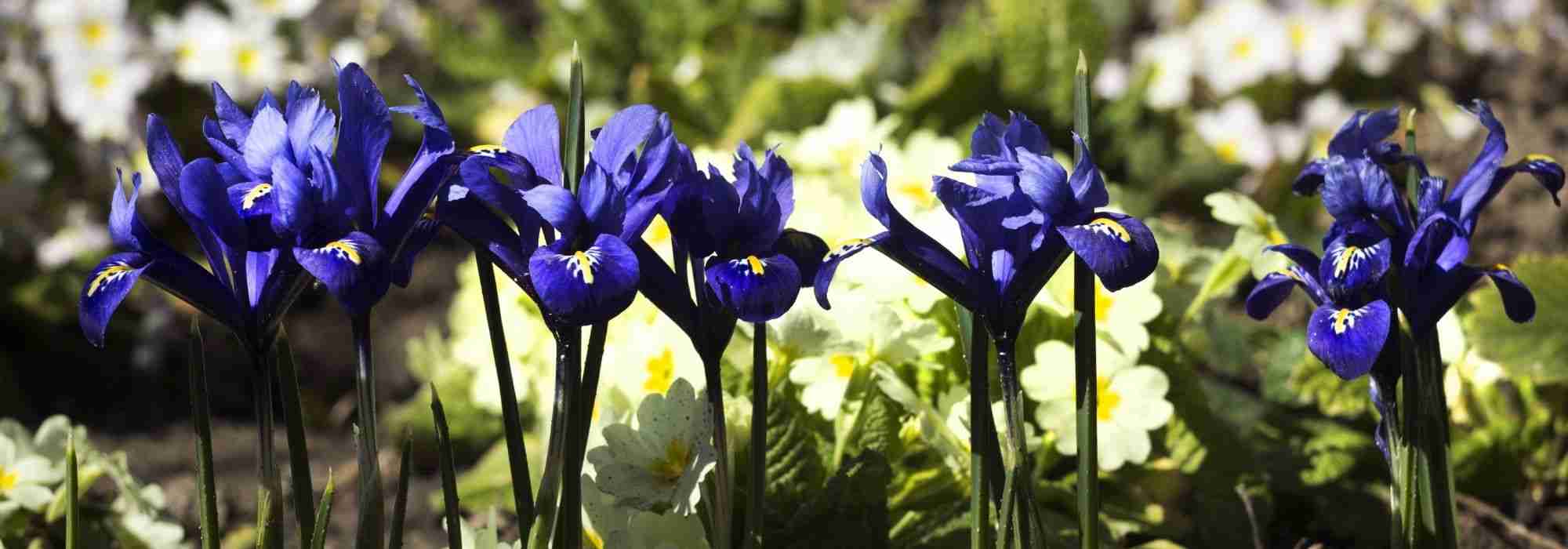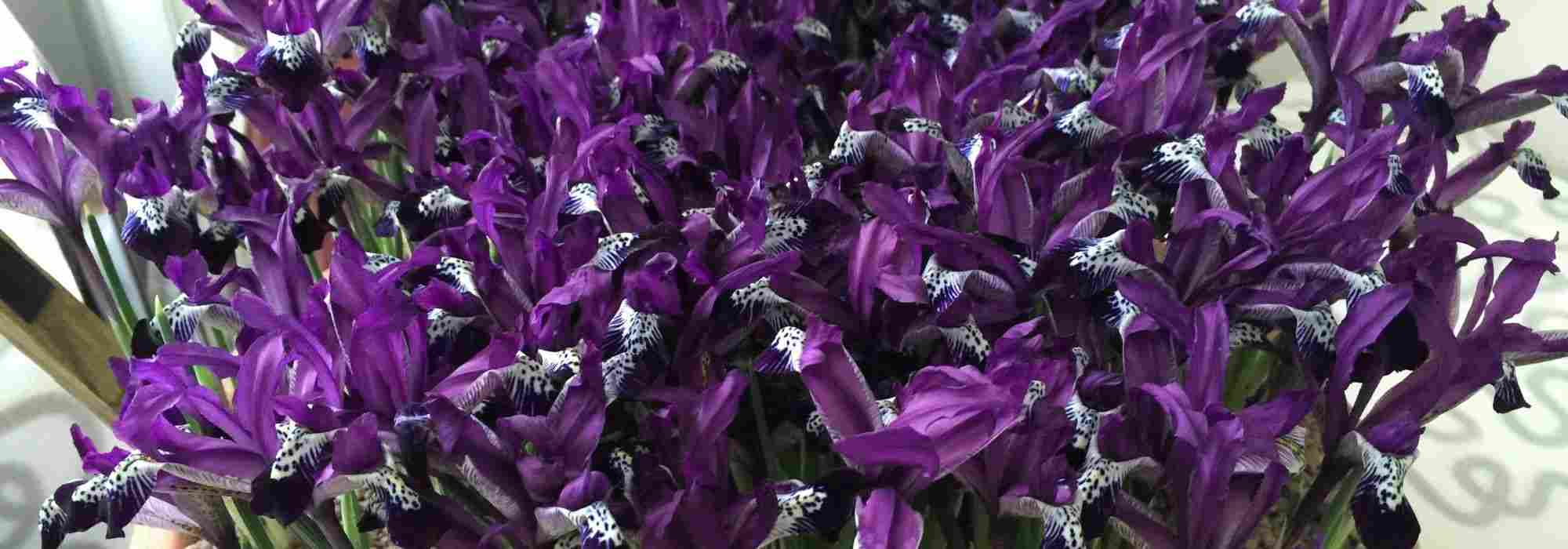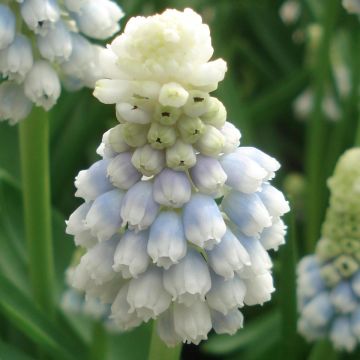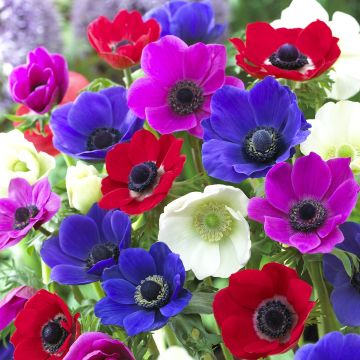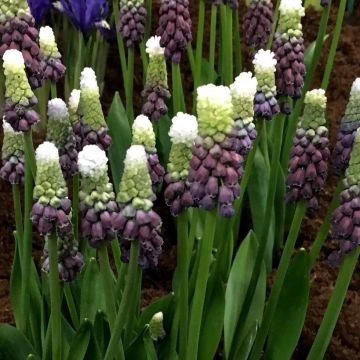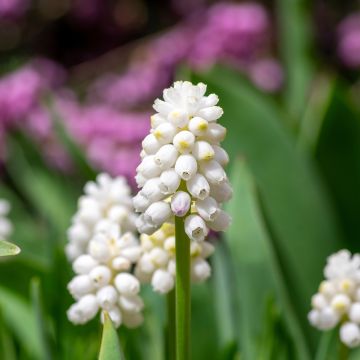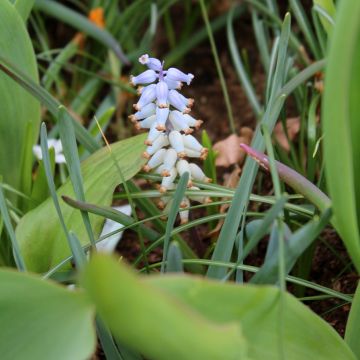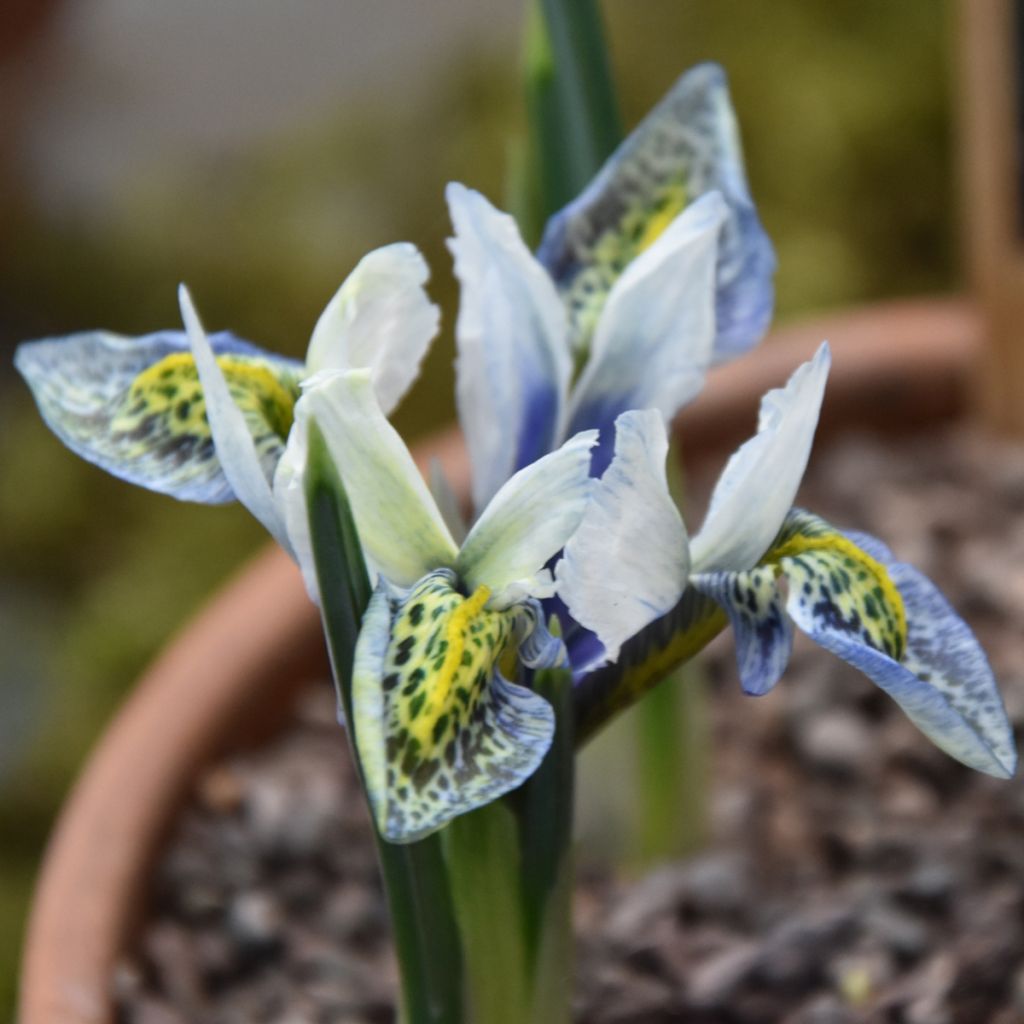

Iris reticulata Splish Splash - Iris réticulé
Iris reticulata Splish Splash
Iris reticulata Splish Splash
"netted iris" or "dwarf iris"
Special offer!
Receive a €20 voucher for any order over €90 (excluding delivery costs, credit notes, and plastic-free options)!
1- Add your favorite plants to your cart.
2- Once you have reached €90, confirm your order (you can even choose the delivery date!).
3- As soon as your order is shipped, you will receive an email containing your voucher code, valid for 3 months (90 days).
Your voucher is unique and can only be used once, for any order with a minimum value of €20, excluding delivery costs.
Can be combined with other current offers, non-divisible and non-refundable.
Why not try an alternative variety in stock?
View all →This plant carries a 6 months recovery warranty
More information
We guarantee the quality of our plants for a full growing cycle, and will replace at our expense any plant that fails to recover under normal climatic and planting conditions.
Does this plant fit my garden?
Set up your Plantfit profile →
Description
The Iris reticulata 'Splish Splash' is a variety of reticulated iris resembling 'Sea Breeze' in terms of colour, but its larger flowers are more brightly coloured and have broader petals. With clean lines and precise design, they consist of 3 upright and bi-coloured petaloid styles, indigo and white, dominating 3 lighter blue sepals with a central white mark, speckled with blue-black and a yellow crest. This small bulbous plant, like other reticulated irises, is enchanting after winter. Absolutely stunning, these flowers deserve to be planted in a flowerpot to be observed up close.
The Iris reticulata 'Splish Splash' is attributed to Canadian breeder Alan Mac Murtrie, who has specialized in hybridizing small botanical irises from the mountains of the Caucasus, Turkey, Iran, and Iraq for the past 30 years. In nature, these plants grow in alpine meadows and rocky habitats (on limestone and gneiss-rich soil) at altitudes between 1000 and 2500m (3281 and 8202ft).
The 'Splish Splash' variety forms a small, erect and spreading clump of 15 cm (6in) when in flower, and it can theoretically spread indefinitely through the production of bulblets. It flowers at the end of winter, when the days start to lengthen, usually in February-March. Its solitary flowers, 5 to 10 cm (2 to 4in) in length, are relatively large compared to the size of the plant. They consist of 3 female floral parts, called styles, transformed into narrow, upright, spatulate petals. Their indigo blue colour is marked by a white midline that widens towards the tip of the style, which is entirely white. Underneath this trio of petaloid styles, 3 horizontal sepals are arranged in a quincunx pattern. Wider, they are convex, with a lighter blue colour and a central white mark. These sepals are also heavily punctate with blue-black and traversed by a yellow midline. Each flower is enclosed at the base by two scale-like bracts of a purple-green colour. The foliage, short during flowering, elongates afterwards. The basal leaves are glaucous green, quadrangular in section, sheathing at the base. They are deciduous and disappear in summer.
The reticulated iris is perfect in rockeries, borders, flowerbeds, or even to decorate ephemeral flowering pots, which can be brought indoors to fully enjoy their fragrance. It pairs well with iris pumila, botanical crocuses, anemones blanda, or Algerian iris. Let the bulbs naturalize, and after a few years, they will form beautiful clumps that herald the return of spring. This plant experiences cold and snowy winters in its native range, as well as hot and dry summers. Therefore, it can easily be adopted in mountainous and rocky gardens, or in a dry garden.
Iris reticulata Splish Splash in pictures
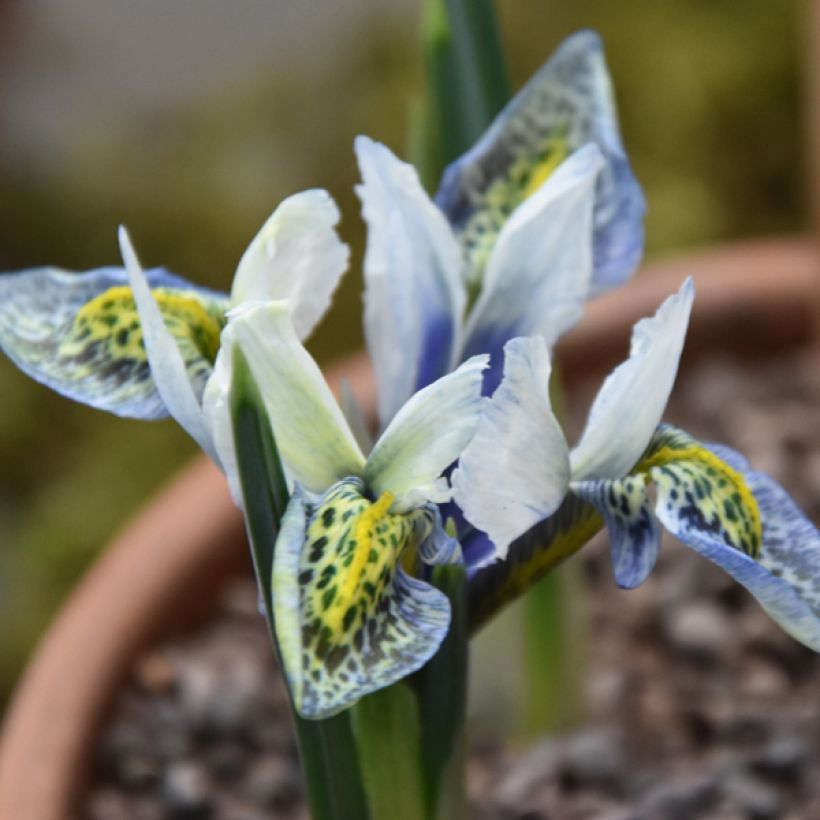

Plant habit
Flowering
Foliage
Botanical data
Iris
reticulata
Splish Splash
Iridaceae
"netted iris" or "dwarf iris"
Cultivar or hybrid
Planting and care
Plant the bulbs in September-October, in a sunny location, in well-drained soil, at a depth of 10 cm (4in) and preferably in groups, spaced 8 cm (3in) apart. Cut off the withered flowers at their base, being careful to leave the stem. Continue to water the plants at their base. Once the foliage has turned yellow, remove it and leave the bulbs in place for them to flower again the following year. After flowering, water three times with liquid fertilizer at one-month intervals. Leave the bulbs in place for several years.
Planting period
Intended location
Care
Planting & care advice
This item has not been reviewed yet - be the first to leave a review about it.
Similar products
Haven't found what you were looking for?
Hardiness is the lowest winter temperature a plant can endure without suffering serious damage or even dying. However, hardiness is affected by location (a sheltered area, such as a patio), protection (winter cover) and soil type (hardiness is improved by well-drained soil).

Photo Sharing Terms & Conditions
In order to encourage gardeners to interact and share their experiences, Promesse de fleurs offers various media enabling content to be uploaded onto its Site - in particular via the ‘Photo sharing’ module.
The User agrees to refrain from:
- Posting any content that is illegal, prejudicial, insulting, racist, inciteful to hatred, revisionist, contrary to public decency, that infringes on privacy or on the privacy rights of third parties, in particular the publicity rights of persons and goods, intellectual property rights, or the right to privacy.
- Submitting content on behalf of a third party;
- Impersonate the identity of a third party and/or publish any personal information about a third party;
In general, the User undertakes to refrain from any unethical behaviour.
All Content (in particular text, comments, files, images, photos, videos, creative works, etc.), which may be subject to property or intellectual property rights, image or other private rights, shall remain the property of the User, subject to the limited rights granted by the terms of the licence granted by Promesse de fleurs as stated below. Users are at liberty to publish or not to publish such Content on the Site, notably via the ‘Photo Sharing’ facility, and accept that this Content shall be made public and freely accessible, notably on the Internet.
Users further acknowledge, undertake to have ,and guarantee that they hold all necessary rights and permissions to publish such material on the Site, in particular with regard to the legislation in force pertaining to any privacy, property, intellectual property, image, or contractual rights, or rights of any other nature. By publishing such Content on the Site, Users acknowledge accepting full liability as publishers of the Content within the meaning of the law, and grant Promesse de fleurs, free of charge, an inclusive, worldwide licence for the said Content for the entire duration of its publication, including all reproduction, representation, up/downloading, displaying, performing, transmission, and storage rights.
Users also grant permission for their name to be linked to the Content and accept that this link may not always be made available.
By engaging in posting material, Users consent to their Content becoming automatically accessible on the Internet, in particular on other sites and/or blogs and/or web pages of the Promesse de fleurs site, including in particular social pages and the Promesse de fleurs catalogue.
Users may secure the removal of entrusted content free of charge by issuing a simple request via our contact form.
The flowering period indicated on our website applies to countries and regions located in USDA zone 8 (France, the United Kingdom, Ireland, the Netherlands, etc.)
It will vary according to where you live:
- In zones 9 to 10 (Italy, Spain, Greece, etc.), flowering will occur about 2 to 4 weeks earlier.
- In zones 6 to 7 (Germany, Poland, Slovenia, and lower mountainous regions), flowering will be delayed by 2 to 3 weeks.
- In zone 5 (Central Europe, Scandinavia), blooming will be delayed by 3 to 5 weeks.
In temperate climates, pruning of spring-flowering shrubs (forsythia, spireas, etc.) should be done just after flowering.
Pruning of summer-flowering shrubs (Indian Lilac, Perovskia, etc.) can be done in winter or spring.
In cold regions as well as with frost-sensitive plants, avoid pruning too early when severe frosts may still occur.
The planting period indicated on our website applies to countries and regions located in USDA zone 8 (France, United Kingdom, Ireland, Netherlands).
It will vary according to where you live:
- In Mediterranean zones (Marseille, Madrid, Milan, etc.), autumn and winter are the best planting periods.
- In continental zones (Strasbourg, Munich, Vienna, etc.), delay planting by 2 to 3 weeks in spring and bring it forward by 2 to 4 weeks in autumn.
- In mountainous regions (the Alps, Pyrenees, Carpathians, etc.), it is best to plant in late spring (May-June) or late summer (August-September).
The harvesting period indicated on our website applies to countries and regions in USDA zone 8 (France, England, Ireland, the Netherlands).
In colder areas (Scandinavia, Poland, Austria...) fruit and vegetable harvests are likely to be delayed by 3-4 weeks.
In warmer areas (Italy, Spain, Greece, etc.), harvesting will probably take place earlier, depending on weather conditions.
The sowing periods indicated on our website apply to countries and regions within USDA Zone 8 (France, UK, Ireland, Netherlands).
In colder areas (Scandinavia, Poland, Austria...), delay any outdoor sowing by 3-4 weeks, or sow under glass.
In warmer climes (Italy, Spain, Greece, etc.), bring outdoor sowing forward by a few weeks.






























